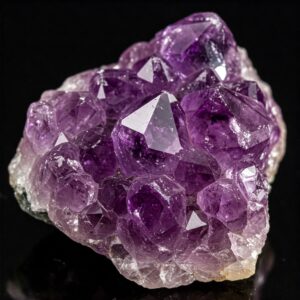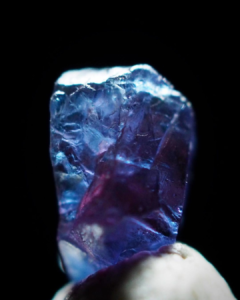


shop BY BAND STYLES
shop BY STONE ARRANGEMENTS
shop BY DESIGN STYLES
shop BY METAL COLOR
shop BY STONE TYPES
shop BY BAND STYLES
shop BY STONE ARRANGEMENTS
shop BY DESIGN STYLES
shop BY METAL COLOR
shop BY STONE TYPES
shop BY BAND STYLES
shop BY STONE ARRANGEMENTS
shop BY STONE TYPES
shop BY METAL COLOR
SHOP BY STYLE
GIFTS BY OCCASION
GIFTS BY PRICE

✚ BY BAND STYLES
✚ BY STONE ARRANGEMENTS

When it comes to the world of gemstones, amethyst and alexandrite stand out as two captivating choices, each with its own unique appeal. While amethyst is beloved for its vibrant purple hues, alexandrite is known for its mesmerizing color-changing properties. But how do you choose between the two? This article explores the characteristics of these gemstones to help you decide which one resonates with you the most.
Amethyst, with its mesmerizing shades of purple, has been treasured for centuries. First, let’s take a basic look at amethyst, the stone of tranquility. Here’s the breakdown:
Amethyst is a variety of quartz known for its stunning purple color, ranging from pale lavender to deep purple. Its color is primarily due to iron impurities within its quartz structure.
Historically, amethyst has been associated with various virtues, including sobriety, wisdom, and spirituality. It’s believed to promote calm and clarity, making it a popular choice for meditation and stress reduction. In jewelry, amethyst offers versatility, complementing both casual and formal attire.
Amethyst is relatively abundant and can be found in various locations around the world such as Brazil, Uruguay, Zambia, Madagascar, and other regions. In Brazil, the state of Minas Gerais is particularly famous for the production of high-quality amethyst. The specific geological conditions in different regions contribute to the formation of amethyst crystals of different sizes and colors.
Amethyst is a visually striking gemstone that is prized for its vivid color and crystalline structure. Here’s a picture to show you what amethyst looks like:

Alexandrite is highly sought after by collectors and gemstone enthusiasts because of its rarity and mesmerizing play of color. Here’s the breakdown:
Alexandrite is a rare variety of chrysoberyl. It is known for its remarkable ability to change color under different lighting conditions. In daylight it appears green, while under incandescent light it changes to a reddish-purple hue. This phenomenon, known as the “alexandrite effect,” is due to its unique chemical composition, particularly the presence of chromium.
Discovered in Russia in the 19th century, alexandrite quickly gained popularity among royalty and collectors. Its rarity and unique optical properties make it a highly prized gemstone. Symbolically, alexandrite represents balance, joy and transformation, making it a meaningful choice for those seeking positive change.
Historically, Russia has been the primary source of high quality alexandrite and the gemstone is still associated with Russian origin. However, alexandrite deposits can also be found in Brazil, Sri Lanka and East Africa. Russian alexandrite is particularly prized for its color variation and exceptional quality.
Alexandrite is known for its remarkable color-changing properties, exhibiting different hues under different lighting conditions. Here’s a picture to show you what amethyst looks like:

When comparing amethyst and alexandrite, it’s important to understand their unique characteristics, from their composition to their cultural significance. Below is a detailed breakdown of their differences:
Amethyst: A variety of quartz composed of silicon dioxide (SiO₂). Its purple color comes from iron impurities and natural irradiation.
Alexandrite: A variety of chrysoberyl consisting of beryllium aluminum oxide (BeAl₂O₄). Its color-changing property is due to trace amounts of chromium, which absorbs light differently under different light sources.
Amethyst: Scores 7 on the Mohs scale of hardness. It is durable enough for everyday wear but susceptible to scratching over time.
Alexandrite: With a Mohs hardness of 8.5, alexandrite is much harder and more scratch-resistant than amethyst. This makes alexandrite very durable for everyday wear.
Amethyst: Known for its consistent purple hues, ranging from light lavender to deep violet. The color is stable and does not change under different lighting conditions.
Alexandrite: Famous for its ability to change color. It appears green in daylight and red or purple under incandescent light, a phenomenon known as the “Alexandrite Effect.”
Amethyst: Can be found in large sizes, often forming large crystals. Large, high-quality Amethyst
specimens are relatively common.
Alexandrite: Typically occurs in smaller sizes. Larger, gem-quality Alexandrite stones are extremely rare and highly prized.
Amethyst: An affordable gemstone, with prices ranging from $20 to $50 per carat for high-quality stones. Its abundance keeps prices relatively low.
Alexandrite: An extremely expensive gemstone. Natural alexandrite gemstone prices start at $10,000 per carat for high-quality stones. Its rarity and unique characteristics drive its high value.
Amethyst: A common gemstone found in many parts of the world, including Brazil, Uruguay, and Zambia. It is readily available.
Alexandrite: An exceptionally rare gemstone. Genuine alexandrite is found primarily in Russia, Brazil, and Sri Lanka, with high-quality stones being extremely rare. This rarity contributes to its high value.
Amethyst: Has a long history of use in jewelry and religious artifacts. The name “Amethyst” comes from the Greek word “amethystos,” meaning “not drunken.” It was believed to prevent intoxication and promote serenity. It is associated with royalty in many cultures.
Alexandrite: Discovered in 1830 in the Ural Mountains of Russia and named after Tsar Alexander II. Its colors (green and red) matched the Russian imperial colors, making it a symbol of luxury and power.
Amethyst: Known as the “stone of sobriety,” it symbolizes peace, tranquility, wisdom, and spiritual awareness. It is associated with the crown chakra and is believed to enhance intuition.
Alexandrite: Represents transformation, balance, and joy. Its changing color is seen as a metaphor for adaptability and change. It is often associated with luck and prosperity.
Choosing between amethyst and alexandrite depends on your personal preferences, budget, and the meaning you attach to the gemstones. Here are key factors to consider when deciding which gemstone is right for you:
Choose Amethyst If:
Choose Alexandrite If:
When purchasing genuine amethyst or alexandrite gemstones, it is important to ensure you get an authentic and high-quality stone. Here are some buying tips on how to purchase genuine gemstones:
For Amethyst:
For Alexandrite:
To keep your amethyst and alexandrite gemstones looking their best, it’s important to follow proper care and maintenance practices. Here are some detailed tips on how to care for and maintain your amethyst and alexandrite jewelry:
Amethyst:
Alexandrite:
Amethyst:
Alexandrite:
Both amethyst and alexandrite are exceptional gemstones, each with its own unique appeal. Amethyst is perfect for those seeking an affordable, versatile option with spiritual significance, while Alexandrite is ideal for collectors and investors seeking a rare, high-value gemstone. By understanding their differences, you can choose the gemstone that best suits your needs and preferences.
At Pattiring, we offer a stunning collection of both amethyst and alexandrite jewelry, crafted to perfection for any occasion. Whether you’re drawn to the timeless beauty of Amethyst or the captivating allure of Alexandrite, our expertly curated pieces are designed to suit your unique style and needs!